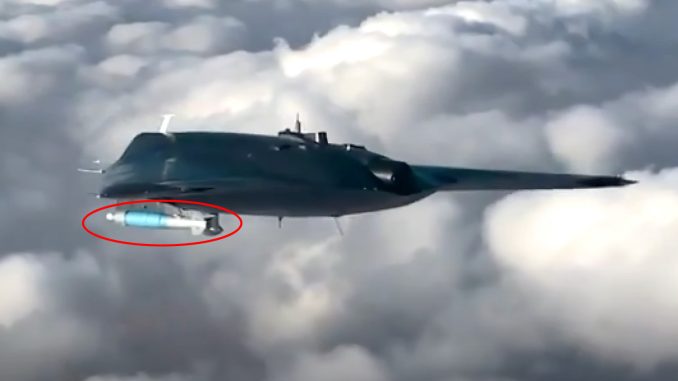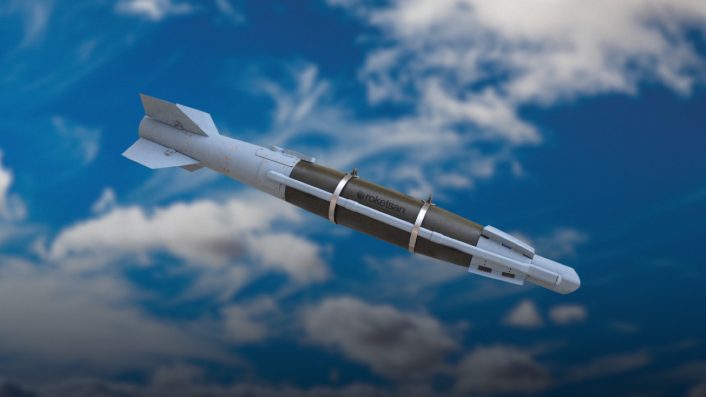Denne bør muligens med i vurderingen når vi skal velge drone. Problemet er vel at Tyrkia nå rir to hester som er beskrevet før her på bloggen 4. september. (Red.)
Turkey’s ANKA III UCAV Flies with Munition for the First Time

The ANKA III was ‘airborne’ with a Teber-82 guided munition mounted on its left wing.
TAI (Turkish Aerospace Industries/Türk Havacılık Uzay Sanayii/TUSAS) announced on Sep. 1, 2024, that its ANKA III UCAV (Unmanned Combat Aerial Vehicle) “successfully completed its first armed flight.” TAI said in a statement that the Anka III was “airborne” with a “Teber-82 guided munition mounted on its left wing, and various tests were conducted during the flight.”
Video footage of the flight shows the ANKA III being accompanied by a Hurkus aircraft, with the Teber-82 guided bomb loaded on the left wing’s weapon station. Tests of the “concealed weapon stations beneath the fuselage,” were conducted, Turkiye Today said. The latest flight follows a previous one in August, which involved a “test of retracting its landing gear.”
The ANKA III flying-wing UCAV is poised to become Turkey’s leading reconnaissance-strike platform, being envisaged as a loyal wingman to the KAAN fighter, beside the Kizilelma. Late in May, the TAI’s CEO Temel Kotil also announced a twin-engine version to fly at “supersonic speeds.” It has also been photographed with a host of air-to-ground munitions. It made its maiden flight on Dec. 28, 2023.
Described as a “deep-strike stealth” unmanned aircraft by Daily Sabah, the ANKA III currently is capable of a high subsonic speed of Mach 0.7 and a cruising speed of Mach 0.42. It can touch 40,000 feet in its highest service ceiling, has a maximum take-off weight of 6,500 kg, can carry 1,200 kg in payload with an endurance of 10 hours.
Test video
TAI General Manager Mehmet Demiroglu was quoted in the Turkiye Today report: “The successful completion of Anka III’s first armed flight significantly enhances Türkiye’s defense capabilities.” Demiroglu added that this achievement “represents a significant advancement toward the goals of Türkiye’s defense industry.” “This successful armed flight is a milestone in demonstrating the Anka III’s operational capabilities and advancing Türkiye’s defense technology.”
In the video, an EO/IR (Electro-Optical/Infrared) turret can also be seen under the chin. In previous official images of the ANKA III released by TAI, the EO turret is not visible. The nose has a pitot tube (or flight data probe), suggesting the unit is a testing prototype being used to gather data before entering limited series or mass production. The landing gears remain extended for a few seconds after the UCAV is airborne, before being retracted.
The shortened video, perhaps of a longer test flight lasting a few hours, then shows the landing gear being released again, before the ANKA III presumably comes into land. The entire footage is shot from the Hurkus single-engine propeller plane, used as a training aircraft in the Turkish Air Force, that ‘chases’ the ANKA III and is seen in the beginning of the film taxing on the runway.
It can be assumed that the flight was to test the ‘carriage’ and overall performance of the airframe when flying loaded with weapons payload, particularly the hardpoints where the munitions would be mounted. Generally, these tests validate the performance of the electrical and electronic connections that eject the weapons along with the structural impact of the weapon on the wing. The nature of the testing envelopes and flight parameters is not known.
In the future, we can expect tests showing the UCAV releasing the bombs on mock targets to fully test the remote weapons engagement system. Subsequent flights might progressively test the ANKA III for its intended aerodynamic, flight control, avionics, sensor performance, munitions carriage and release with both internal and external configurations in more expansive envelopes and wider parameters.
TEBER-82 kit
The Teber-82 has been described by its developer Roketsan as a conversion “kit” for drop bombs into “smart weapons systems through the incorporation of an INS (Inertial Navigation System), GPS and an SAL (Semi-Active Laser) seeker.”
An information brochure further lists the bombs it is meant for being the MK-81 and the 500 pound (226 kg) MK-82 “general purpose munitions,” meaning the latest flight of the ANKA III carried the latter. “TEBER increases the ability of the bomb to strike both static and mobile targets with high precision. It can also be detonated by its proximity sensor.”
According to Defence Turkey, a “calibration sortie” of the TEBER Laser Guidance Kit on the F-16 “was carried out successfully in June 2016.” It can be released two to 15 meters over the target and its CEP (Circular Error of Probability) with only the INS in 25 meters. With INS-GPS combined and the SAL, its CEPs stand at 25 meters and lower than 3 meters respectively. It can take the bomb to a maximum range of 28 km.

Previous flight videos
The ANKA III landing test in August mentioned above does not show the EO/IR turret on the chin. The drone is being ‘chased’ by Hurkus aircraft in this video too. It nevertheless possibly has a small backwards facing camera on the chin since the three landing gears are seen retracting while the UCAV is in the air. They are deployed again when the UCAV comes into land. Whether the one in the latest test video is the same unit or a different prototype is not clear.
Another video TAI posted online earlier in June showed the ANKA III flying chased by the Hurjet advanced jet trainer. The UCAV is seen flying with the landing gears extended the entire duration of the one minute clip.
Considering the ANKA III is slated to operate as a “loyal wingman”, future tests will involve MUM-T (Manned Unmanned Teaming) scenarios, paving the way for integrated missions where manned and unmanned aircraft work closely together, enhancing the operational effectiveness of both platforms.



Ingen kommentarer:
Legg inn en kommentar
Merk: Bare medlemmer av denne bloggen kan legge inn en kommentar.